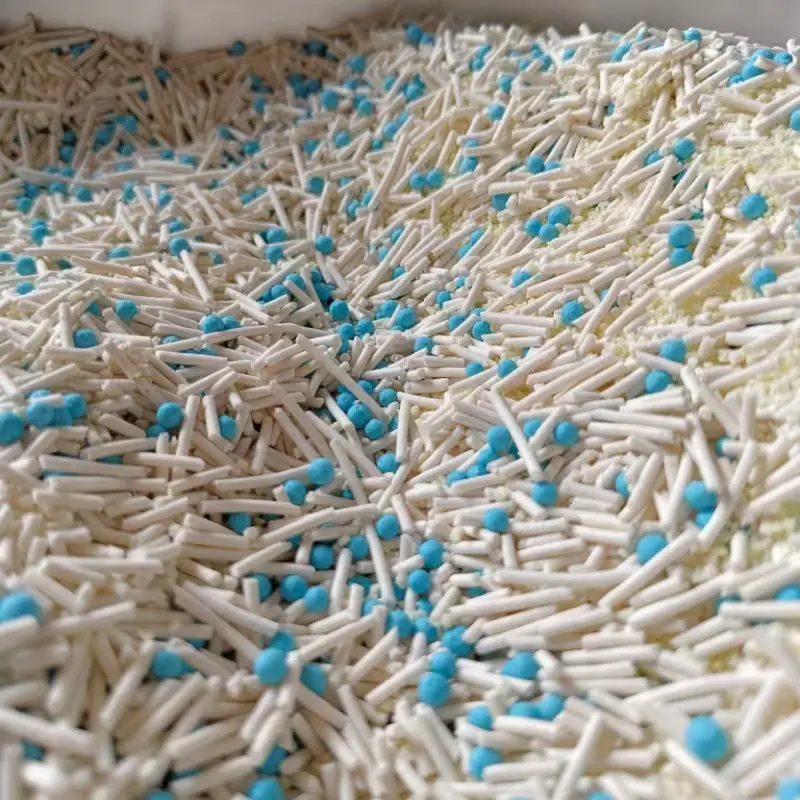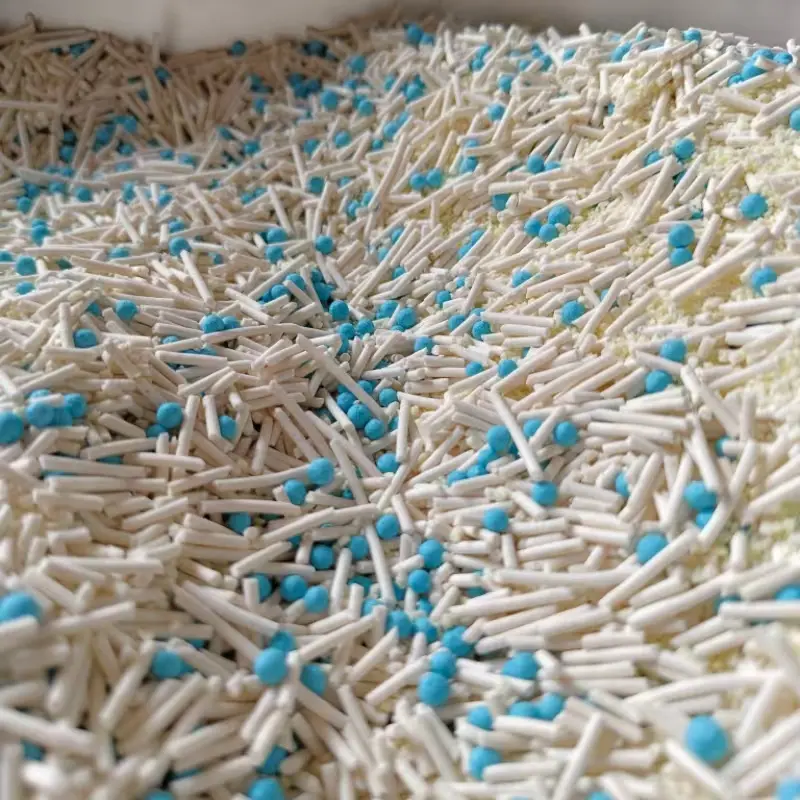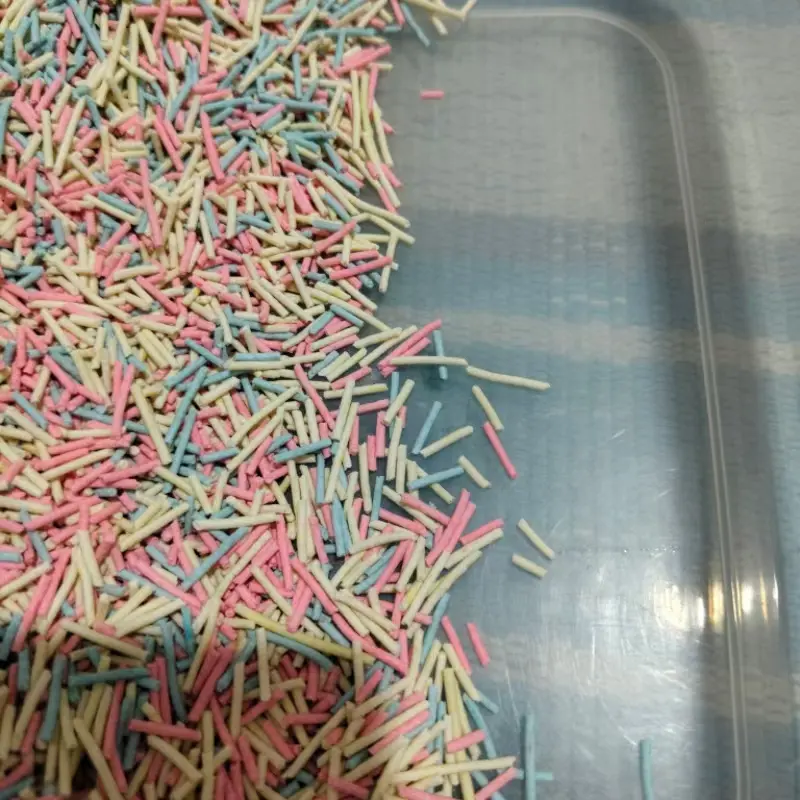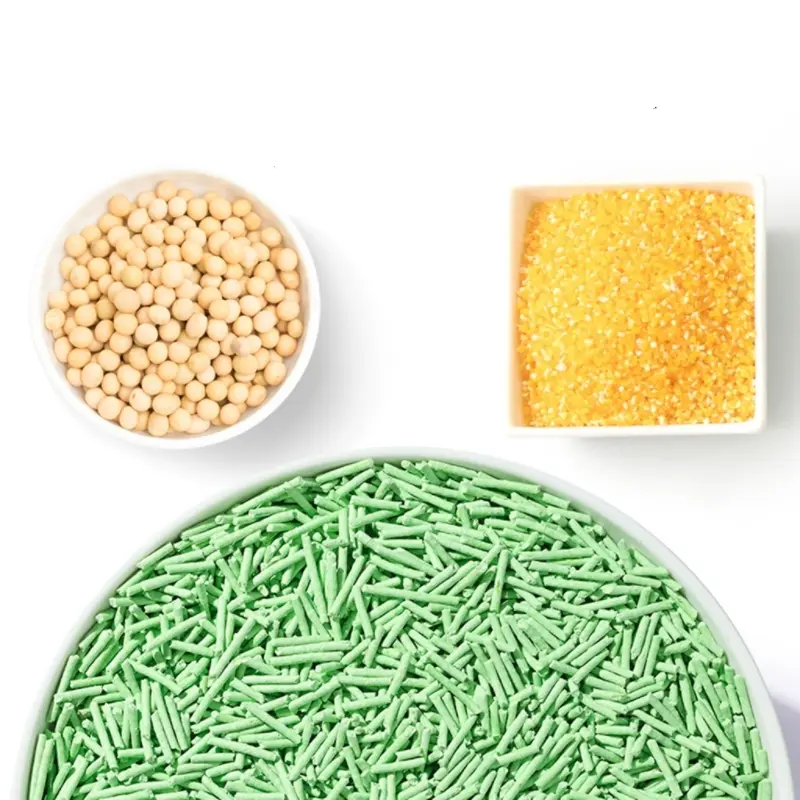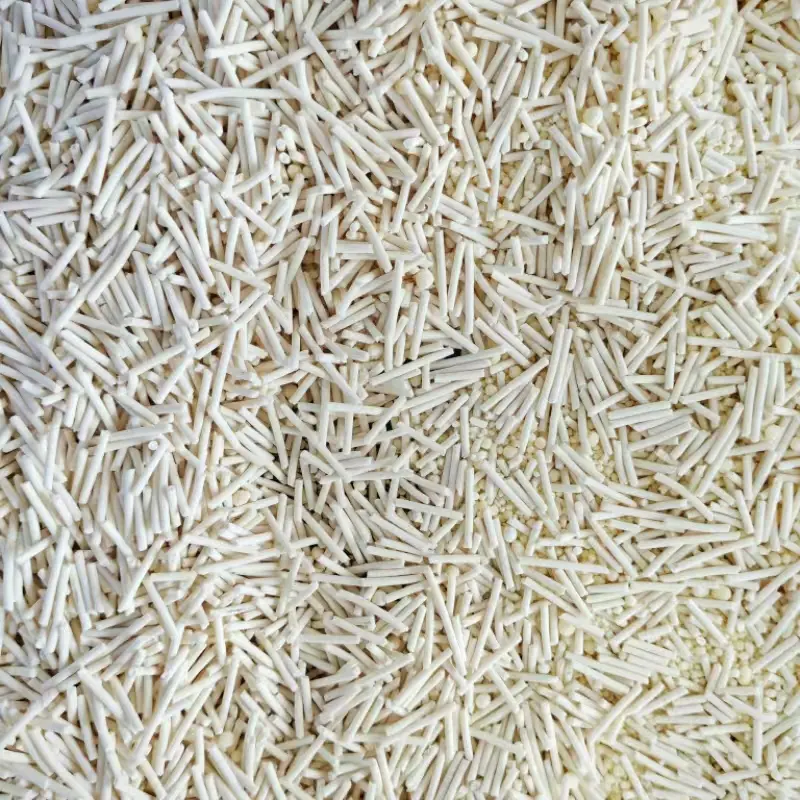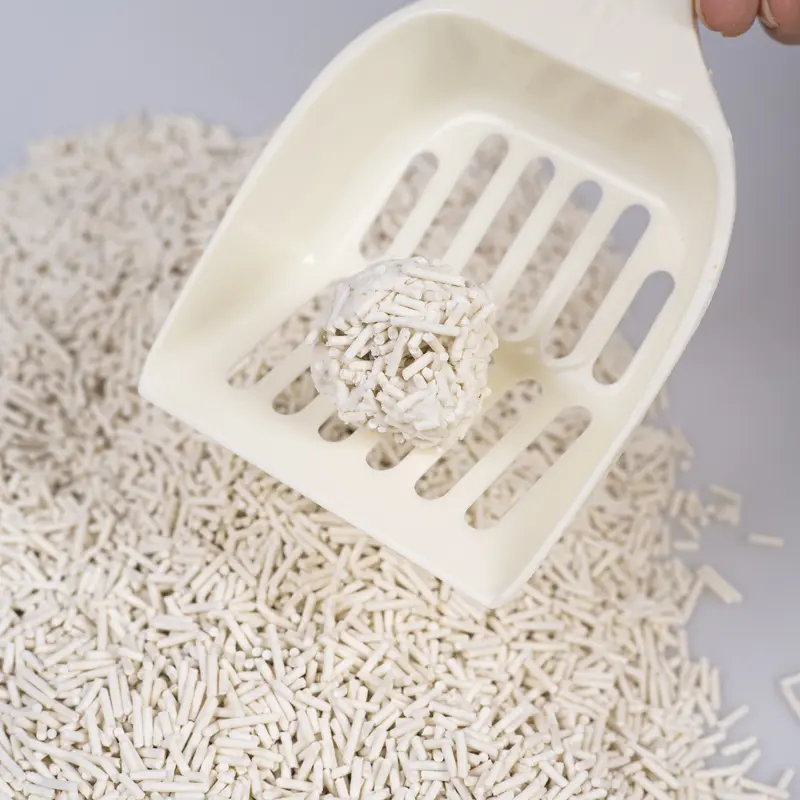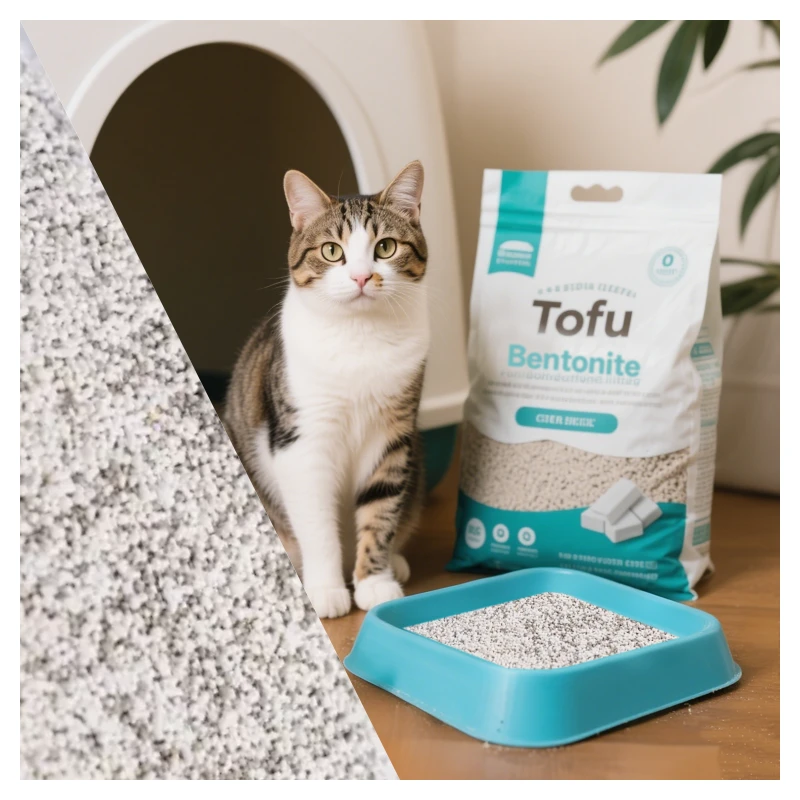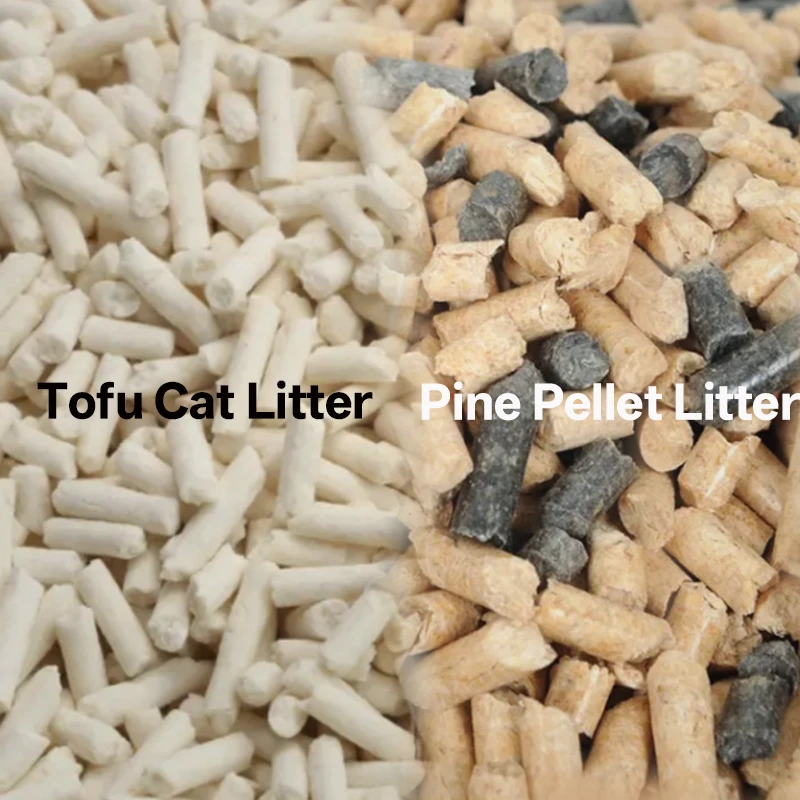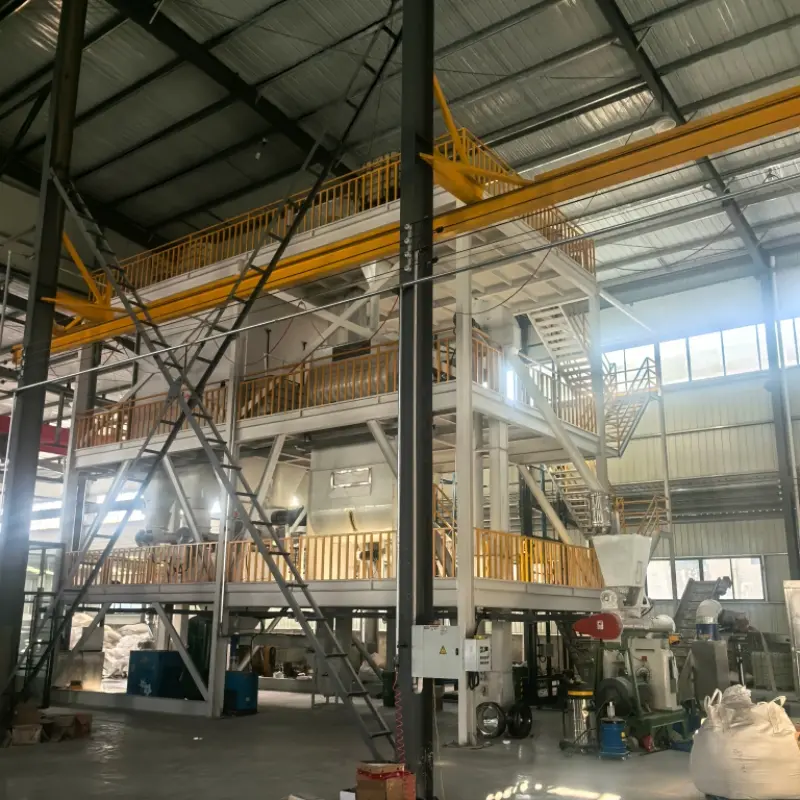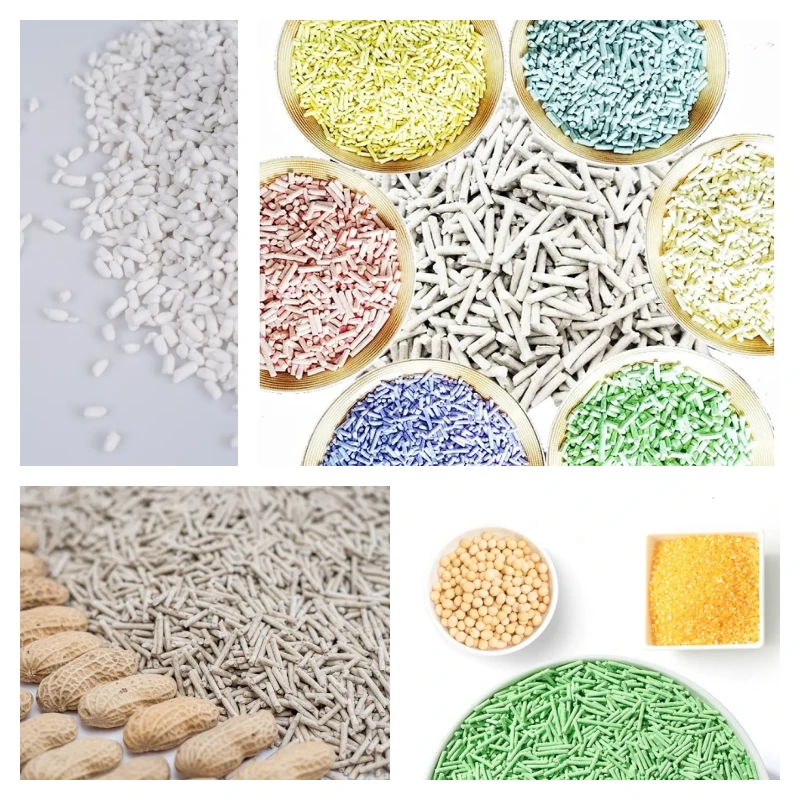What is Cereal cat litter?
962878.webp)
Cereal cat litter is a type of cat litter whose primary components are usually natural grains or plant fibers. In comparison to traditional mineral-based cat litter, cereal cat litter is often more environmentally friendly, biodegradable, and considered more cat and eco-friendly.
The materials used in making cereal cat litter typically include grains such as wheat, corn, soy, or other plant fibers. These raw materials are processed into granules designed to absorb a cat's urine and bury solid waste. Since cereal cat litter is made from natural ingredients, it tends to have a smaller environmental impact during decomposition and reduces dependence on finite mineral resources.
Some cereal cat litters may also incorporate additional natural ingredients, such as plant extracts or antibacterial agents, to enhance odor control and maintain cleanliness. When choosing cat litter, considerations can be based on the cat's needs, personal preferences, and the environmental impact, making cereal cat litter a potential alternative option.
Why Cereal Cat Litter is Odor-Resistant?
Cereal cat litter is made from natural plant fibers with high fiber content and low levels of easily perishable components such as fats and proteins. As a result of this foundation, the modified material possesses a porous structure with dense channels. This structural characteristic allows continuous odor absorption, ensuring that the litter remains odor-free even without scooping for a week.
Using natural cereal fiber in the production of cat litter helps inhibit the growth of mold and reduces odor fermentation due to its low-fat and low-protein nature. The modified structure with multiple pores and improved porosity provides five times the odor-absorbing capacity compared to tofu cat litter. This allows the litter to effectively adsorb odors, promoting a clean and healthy environment for cats during their toileting activities.
The main components of cereal cat litter are cellulose and lignin, with significantly lower levels of perishable elements like proteins and fats compared to traditional cat litter. This reduction minimizes bacterial proliferation, resulting in long-lasting odor control.
In a 7-day bacterial culture experiment, cereal cat litter demonstrated almost no bacterial growth, showcasing its effectiveness in maintaining a bacteria-free environment.
Unlike some inferior cat litters that use fragrances to mask odors superficially, cereal cat litter addresses the root problem without relying on added scents. Cats have a sense of smell 80 times more sensitive than humans, and products with added fragrances can cause respiratory irritation and allergic reactions. Cereal cat litter employs special technology that is fragrance-free, promoting health and safety for cats.
Various types of cat litter, such as bentonite clay, tofu cat litter, and crystal litter, come with their own advantages and disadvantages. Cereal cat litter, composed of cereal fibers, starch, and sodium-based bentonite, stands out with its natural cereal materials, low protein content, hindrance of microbial growth, and enhanced odor absorption, making it a faster and more effective choice. The plant fibers extracted from natural cereals, after undergoing physical modification, result in a porous structure with large pores and dense channels, providing superior odor and moisture absorption.

iLow-protein cereal fibers inhibit bacterial growth.
Introduction to This Cereal Cat Litter
910997.webp)
Appearance
Image of Cereal Cat Litter
The granules of this cat litter are relatively fine, emitting a natural soy milk scent that is subtly fresh and not overpowering. The mild fragrance makes it more easily accepted by cats.
Dust Control
Image depicting the effectiveness of Cereal Cat Litter
The dust from this cereal cat litter is virtually negligible. When pouring the litter, there is minimal dust, making it more friendly to the respiratory and urinary systems of cats.
Odor Control
Image illustrating the performance of Cereal Cat Litter
The deodorizing effect of this cereal-blend cat litter is excellent. During use, there is little to no detectable odor. However, effective odor control also depends on the cat burying its waste properly.
Clumping
Image from the practical testing of Cereal Cat Litter
This cat litter exhibits excellent water absorption, forming tight and quickly clumping structures. Additionally, it effectively encases solid waste, provided the waste is not excessively dry.
Sticking to the Bottom
Image depicting the sticking tendency of Cereal Cat Litter
There is a slight tendency for this cereal-blend cat litter to stick to the bottom, especially when the litter depth is low. In situations of insufficient litter, the user experience may be affected.
Testing Report
The product page for this cereal cat litter displays a testing report, demonstrating the absence of formaldehyde, aflatoxins, and Salmonella. However, the presentation of the report is somewhat unclear, lacking details such as the testing period and specific products tested.
Image showing the testing report for Cereal Cat Litter
User Feedback
Even with the same cat litter, the user experience can vary based on factors like quantity and usage methods.
Image representing user feedback on Cereal Cat Litter
How to make Cereal cat litter?
Large-scale production of grain-based cat litter requires several steps to process natural grains or plant fibers into a usable and effective cat litter product. The following is an overview of the factory grain cat litter production process:
Raw material selection
Choose grains or plant fibers that suit the production process. Common choices include wheat, corn, soybeans, or a combination of these. If you want to customize cat litter from the factory, the raw materials must be confirmed with the cat litter manufacturer when making samples.
Cleaning and sorting
Make sure the grain or fiber you choose is thoroughly clean and free of impurities or contaminants. Sorting may be required to eliminate any unwanted material.
Grinding or crushing
Grind or crush clean grains or plant fibers into smaller particles. This step helps make the litter particles uniform in size.
Drying
The ground material is dried to reduce the moisture content. Proper drying is essential to prevent caking problems and ensure the quality of the final product.
Granulation
The dried material is formed into particles of the desired size and shape. This can be achieved using equipment such as granulators or extruders.
Filter
After granulation, the material is screened to achieve a uniform particle size and to remove any fine dust that may be present.
Additives (optional)
If desired, natural additives such as botanical extracts or antimicrobials can be added to enhance odor control and cleanliness. Through a special process, the cat litter produced has multiple pores/large pore volume/closed channels, making the grain cat litter more odor-absorbing and water-absorbing.
Package
Package the finished cereal litter into bags or containers suitable for retail distribution. If the brand is customized, the packaging of the cat litter needs to be designed separately. There must be a logo on the packaging so that customers can unpack it easily and effortlessly.
The design should have elements of the target market attributes, so that your cat litter market can be closer to your customers.
QC
Quality control measures are implemented throughout the manufacturing process to ensure that the final product meets specified standards for absorbency, caking, and other performance factors.
Test
Each batch of grain litter is tested to ensure it works effectively for odor control, absorbency and clumping properties.
Distribute
Distribute finished products to retailers, wholesalers or directly to consumers.
It’s worth noting that the specific details of the manufacturing process can vary depending on the equipment used, the formulation of the cat litter, and the desired properties of the final product. Compliance with relevant regulations and quality standards throughout the production process is also crucial.
How to Use and Clean Cereal Cat Litter?
How to Use Cereal Cat Litter?
Fill the Litter Box
Fill the litter box with an adequate amount of cereal cat litter. Typically, maintain a depth of 2 to 3 inches.
Introduce Your Cat
If your cat is using cereal cat litter for the first time, introduce them gradually. Mix a small amount of the new litter with the old one, gradually increasing the proportion of the new litter.
Monitor Urine Absorption
Observe the litter's absorption capacity for your cat's urine. Cereal cat litter typically absorbs urine effectively, forming clumps for easy cleaning.
How to Clean Cereal Cat Litter?
Regularly Scoop Solid Waste
Use a cat litter scoop to regularly remove solid waste from the litter box. This helps maintain cleanliness and odor control.
Periodically Replace the Litter
While cereal cat litter has good absorption, it's advisable to periodically replace the entire litter in the box to ensure hygiene and cleanliness.
Dispose of Used Litter
As cereal cat litter is usually biodegradable, dispose of used litter in the trash. Check the product packaging or manufacturer's recommendations for proper disposal.
Keep it Dry
Cereal cat litter can become clumpy in high humidity. Store the litter in a dry place to prevent grains from sticking together.
Add New Litter
Gradually add new cereal cat litter as needed to maintain the depth and absorption capacity in the litter box.
The methods for using and cleaning cereal cat litter may vary depending on the brand and product features, so it's recommended to read the product instructions and manufacturer's recommendations before use.
453.webp)
